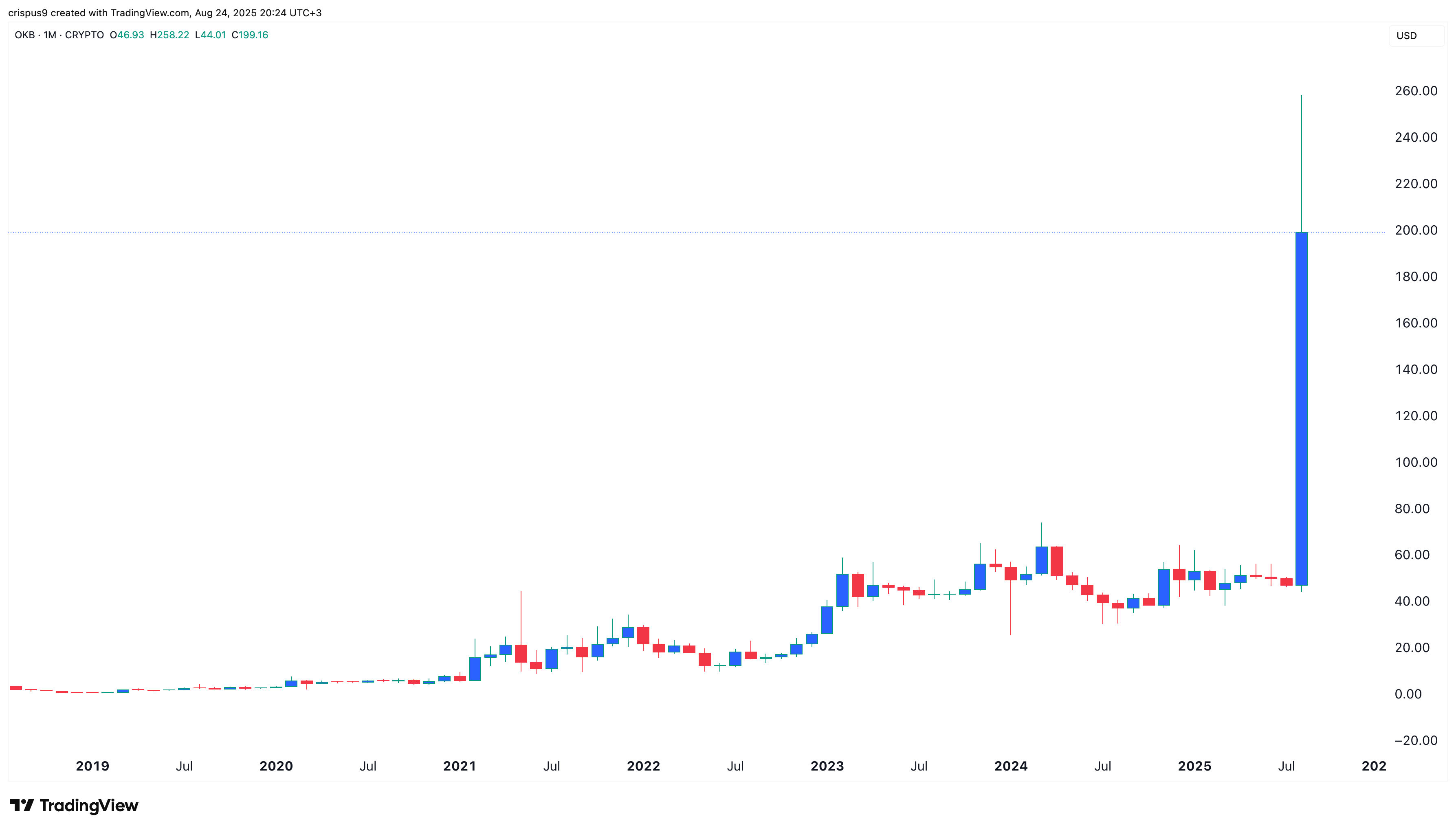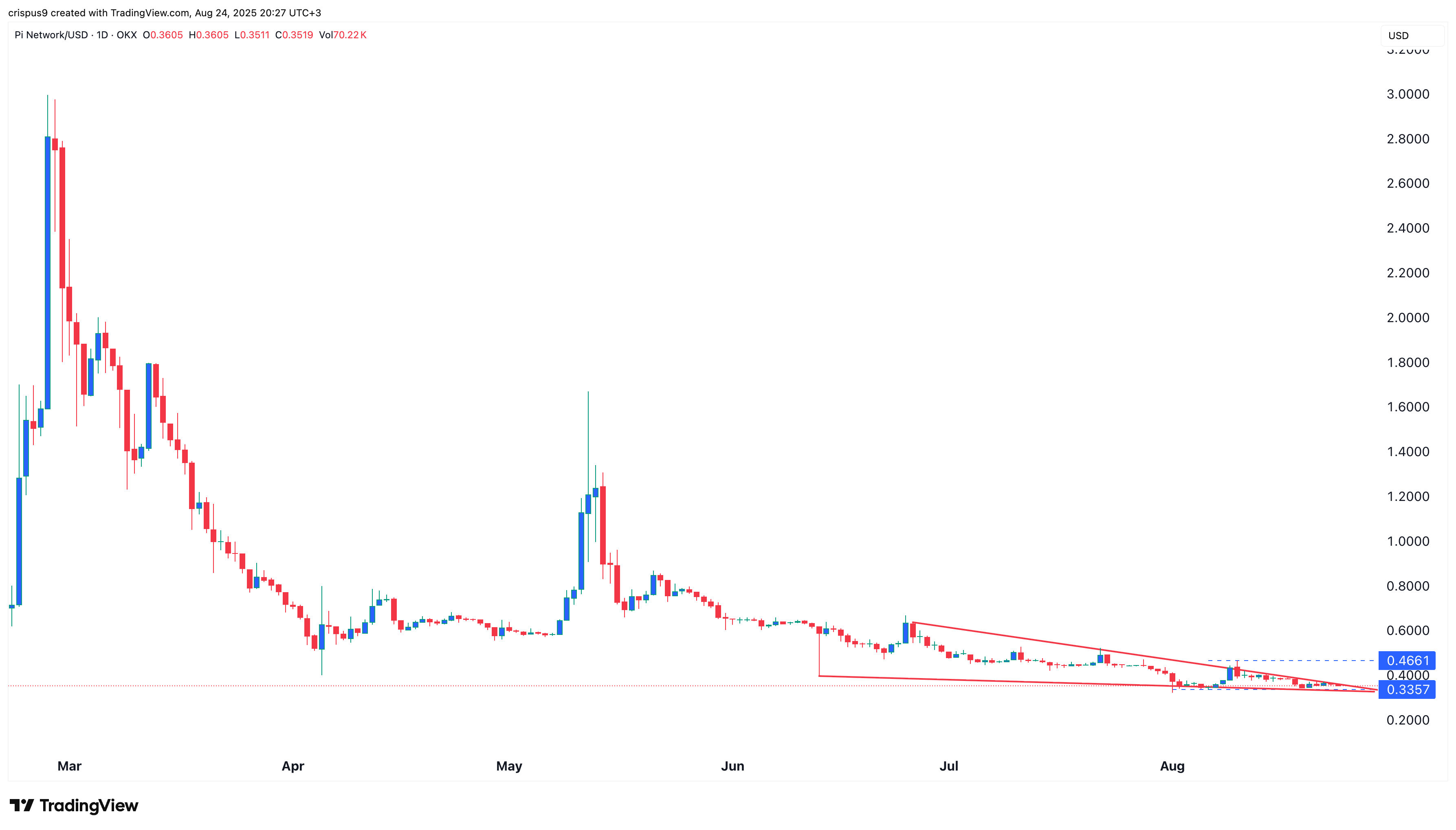OKB, the native token for OKX, is one of the top gainers in the crypto market this month, having jumped by nearly 500%. This surge happened after the developers announced a token burn that brought its maximum supply to 21 million. So, can a similar token burn boost the Pi Network price?
OKB Price Surged After a Major Token Burn
The OKB token, which had been in a tight range for years, suddenly surged this month, reaching its all-time high of $260. This surge happened after management announced a 93% reduction in its supply.

OKB price chart | Source: TradingView
A token burn occurs when a network transfers its tokens to an inaccessible address. The goal is usually to reduce the circulating supply, create a sense of urgency, and boost its price over time.
Cryptocurrencies have various approaches to burn their tokens. Some, like OKB, did burn them without a formal process like voting. Others require a vote to reduce the circulating supply.
In many instances, cryptocurrencies with huge utility use the collected fees to burn their tokens. A good example of this is the BNB Smart Chain (BSC), which incinerates tokens based on the network fees. Shibarium’s transaction revenue is also converted into SHIB and burned.
Is a Pi Network Token Burn Possible?
One reason the Pi Network price has imploded since the mainnet launch is that it continues to unlock millions of new tokens daily, a process expected to take years to complete.
Data shows that it will unlock over 1.26 billion tokens worth over $445 million in the next 13 months, with the average monthly amount being 31.8 million tokens.
CMC data shows that there are now 7.93 billion Pi tokens in circulation against a supply limit of 100 billion. This means that eventually, over 90 billion tokens will be unlocked, increasing the circulating supply.
A token burn is one of the best ways to limit the challenges or risks associated with unlocks. Fortunately, Pi Network offers several options for burning tokens.
For example, like OKX did, the Pi Foundation can voluntarily decide to incinerate some of the tokens in its holdings.
The other option would be to execute a token burn for those that have been unclaimed. While the exact number is not public, it is likely that billions of tokens have been earned by pioneers but not yet claimed.
Additionally, tokens have been mined, but some pioneers have failed the ongoing Know Your Customer (KYC) process. All these tokens could be burned to boost the value of the token.
The other option is to burn the fees generated by Pi Network through its ecosystem. The challenge, however, is that the ecosystem remains tiny and its fees are almost negligible.
READ MORE: ZBCN Price Analysis as Zebec Card and Payroll Growth Continues
Pi Coin Price Technical Analysis
A key similarity between Pi Network price and OKB is that the two remained in a tight range for a long time, a sign that they were in the accumulation phase of the Wyckoff Theory.
OKB has now moved to the markup phase, while Pi Coin price could be on the cusp of entering the same, as it has formed a falling wedge and a double-bottom chart pattern.

Pi Network price chart | Source: TradingView
A falling wedge is made up of two descending and converging trendlines, while the double-bottom has two lows and a neckline.
Therefore, there are odds that a catalyst, potentially an exchange listing or a token burn, will boost the Pi Network price much higher, potentially to $1 in the near term.
READ MORE: Chainlink Price Prediction: Is LINK a Buy as Experts Accumulate?










